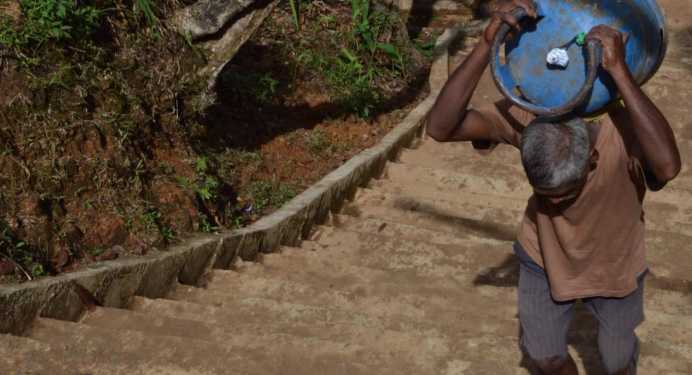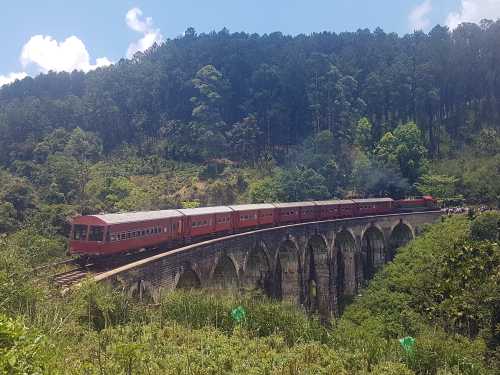
The neglected heroes
The ants of Adam's Peak
The 5,200 or so steps to the summit of Adam's Peak are a daunting prospect for even the staunchest of believers. At 5am, only the glimmer of the moon, partly obscured by mist, and a distant trail of lights guide the way. A monk attaches a white bracelet to our wrists, and an extra zero to the size of our donation in the public register. “Wear Right Footwear” a sign belatedly advises.
Though 2,200 metres high, the mountain remains a magnet for a multitude of faiths. For Buddhist’s this is ‘Sri Pada’ ("sacred footprint"), the footprint of Buddha. For the Christian and Islamic traditions, this is the first footprint of Adam after he was banished from the Garden of Eden. For Hindus, this is the footprint of the deity Shiva (‘Shiva padam’ in Tamil). For us this was a voluntary sacrifice.

For the ants of Adam’s Peak, however, it is their place of work. Burdened with sacks of goods - water bottles, tea, rice, chickpeas, fruit and gas canisters - on their heads, necks and shoulders, they ascend in a slalom pattern, sauntering between descending tourists and pilgrims, many running and skipping to reduce the strain on their wobbly knees. A group of students chants and collects trash.
Despite flimsy flip-flops, their footing on the shiny, polished stones is assured. They daren’t pause or lose momentum for even a second; particularly not to field questions about how little they are remunerated or how many family members they have to support. I suspect that whilst ascending they are ignorant of all that surrounds them.Their breathing is calm, consistent and almost meditative; their postures testament to the loads they lift in this Sisyphean pursuit.

With limited preparation, save for an investment in footwear, the climb is psychologically taxing. There are no mild inclines meandering around the mountain side. Instead, steps of various heights and depths climb inconsistently and haphazardly, often over-compensating for the slightest of miscalculation.
There are welcome provisions of tea, chickpeas and roti (flat breads, often filled with chilli paste); their price ascending as sharply as the peak. And yet the wages of those making all this possible remain as flat as the land we crave. They are the servants at Adam's feet.

Even with all the spiritual props - Buddhist statues and flags lining the route, accumulations of prayer string, pure white clothing - we scrape our heels against the last thousand or so steps, engaged in other times nauseating cheerleader talk. “Keep going!”. “The end is in sight!”. “You can make it!”
Every Sri Lankan will ascend Adam’s Peak at least once in their lifetime, but for the ants of Adam’s Peak it is a daily routine. As we reach the summit, we’re greeted by a remarkable view and a rather ugly temple that furthers fuels our fascination about the fervour in which the mountain is held. And yet it is those nameless people loaded like mules, not the monks, who we most recall.
Ian is a writer based in the Balkans. He is the author of 'Dragon's Teeth - Tales from North Kosovo' and 'Luka'. Follow Ian on Twitter @bancroftian.
Currently in: Belgrade, Serbia — @bancroftian


